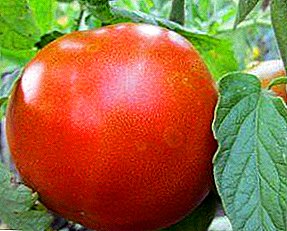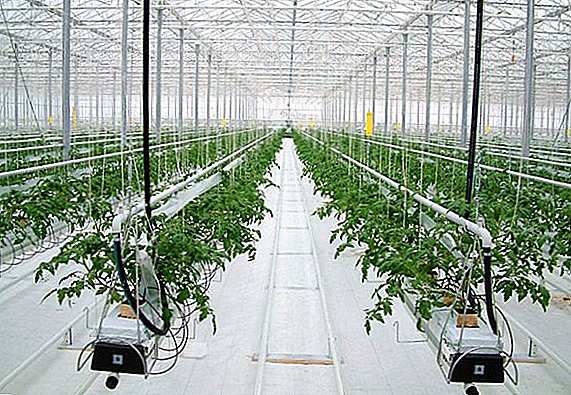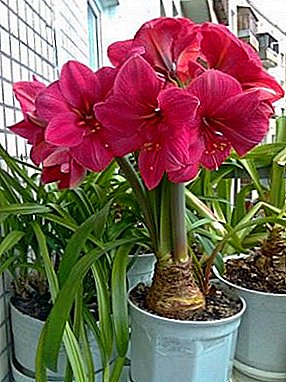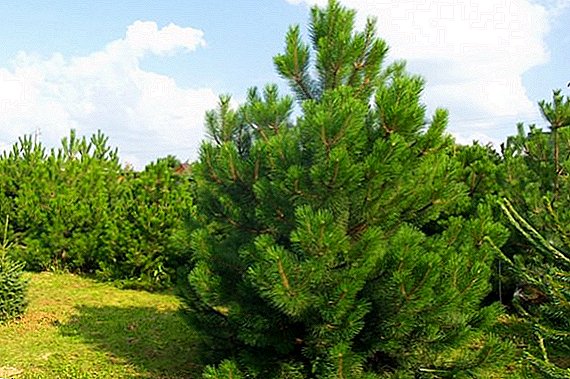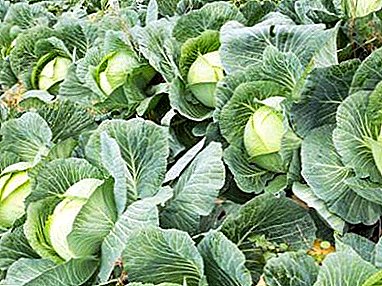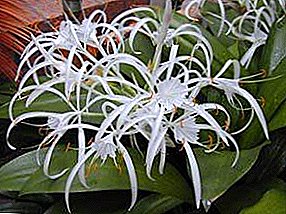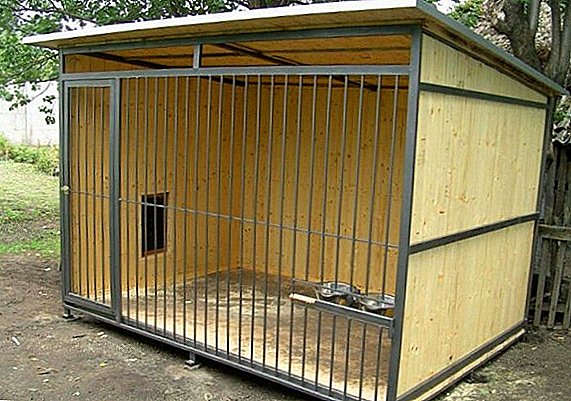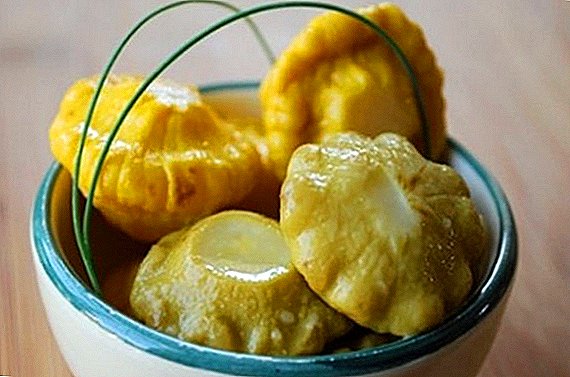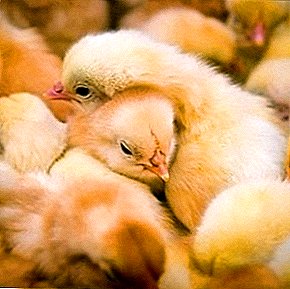 Among garden crops sweet pepper occupies a significant place. This storehouse of vitamins is grown on almost every summer cottage. Many gardeners are not limited to one type of vegetable, trying to choose from several options the best. Today, however, breeders have already brought a sufficient number of varieties for any, even the most pretentious taste. One of these varieties is Kakadu Pepper, the description and features of which we will consider.
Among garden crops sweet pepper occupies a significant place. This storehouse of vitamins is grown on almost every summer cottage. Many gardeners are not limited to one type of vegetable, trying to choose from several options the best. Today, however, breeders have already brought a sufficient number of varieties for any, even the most pretentious taste. One of these varieties is Kakadu Pepper, the description and features of which we will consider.
Variety description
Experienced gardeners have long given their preference to fast-ripening and high-yielding varieties of vegetable crops. Pepper varieties "Kakadu F1", judging by the numerous reviews, is fully consistent with these requirements.
"Kakadu" refers to hybrid varieties, mid-season, its ripening period is 110-115 days until the first fruits appear.It can sometimes begin to bear fruit earlier. Bush usually reaches a height of 1.4-1.5 m, upright, lush with large leaves of dark green color. Despite the spreading, the plant does not require a garter and is quite stable.  The fruits are cylindrical, juicy, large, bright red in color, with thick walls and dense, fragrant flesh, sweet in taste.
The fruits are cylindrical, juicy, large, bright red in color, with thick walls and dense, fragrant flesh, sweet in taste.
Did you know? The variety got its name due to the shape of the fruit. Narrowed at the end and having a slight bend, they resemble a parrot beak in shape..
Features grade
Most popular this variety received thanks to the impressive size of the fetus. "Kakadu" is considered the largest hybrid, the weight of fruits can reach 500 g, and in length they grow to 25-30 cm.
Another distinguishing feature is high yield varieties "Kakadu", one bush is able to bring 2.5-3 kg of fruit. The variety is heat-loving, therefore it can be grown in open ground only in a warm climate, in cooler areas it is recommended to grow it only in greenhouses.
Features agrotechnology growing
Pepper varieties "Kakadu", like most hybrids, does not require painstaking care, but demanding of external conditions. In order for the plant to actively grow and bear fruit, it is important to simply follow the basic rules of cultivation of this crop, which will be discussed further. 
Growing seedlings
Sort "Kakadu" is grown by sowing seedlings, this process is simple, although it has its own characteristics. Seeds are planted in the soil mixture from the site in the period from late March to early April. Seeding depth should be no more than 2 cm.
After sowing, the boxes are placed in a room with a temperature of 25-28 degrees until the first shoots appear. Usually they appear fairly quickly - in 7-10 days. After this seedling requires a lot of light and a comfortable temperature of 25-26 degrees.
Important! For sowing seedlings can not use the soil on which previously grown vegetables of the family Solanaceae, because they deplete it.The importance of watering seedlings. Usually the seedlings are watered once a day, in the morning, with water at room temperature. Avoid overflowing the plant to prevent stagnation of water in the soil. As soon as 6 leaves appear on the bushes, you can plant seedlings in the soil on the site.

Transplantation in open ground
"Kakadu" is a heat-loving brand. This means that it can be planted in open ground only in warm areas, where the seedlings will not die from night frost or a sharp temperature drop. In the northern areas, the cultivation of this culture is possible only in greenhouse conditions.
So, taking into account the characteristics of the plant, the correct landing is carried out according to the following rules:
- the height of the stem of the seedling should be at least 15 cm;
- the landing period is at the end of May - the beginning of June;
- the soil should be prepared and fertilized in advance with organic fertilizers;
- when forming beds, the distance between the seedlings should be at least 40 cm, and between the beds - 1 m. With a more dense planting, the bushes will interfere with each other, which will significantly reduce the crop yield;
Important! If the neighbor to the site will be hot pepper, then as a result of cross-pollination, the fruits of pepper "Cockatoo" may get a bitter aftertaste.
- seedlings are planted in prepared holes filled with water, after planting the seedlings are watered again;
- preferably, after planting, immediately mulch the soil around the bushes, thus avoiding a lack of moisture.

Care
In order for the work done on the breeding and planting of seedlings to give a good result, it is necessary to promptly care for the growing pepper bushes and, if necessary, to feed them.
Watering
Like any other sort of sweet pepper, Kakadu loves moisture. Watering should be carried out regularly and abundantly. We have previously noted the thermophilicity of this variety and should take into account that the water temperature during irrigation should not be below +18 degrees.
There are small differences in the regularity of watering a plant that lives in a greenhouse and in open ground. Greenhouse pepper is watered every two days, and groundwater 1-2 times a week.
Important! At the fruit formation stage, more moisture is needed, you need to start watering pepper twice as often, while increasing the amount of water for each plant.

Top dressing
All hybrids love feeding, and "Kakadu" in this case is no exception. Traditionally, pepper is fertilized three times - during the first month after planting in the ground, during the flowering stage of the plant and at the time of fruit formation.
For the fertilizer, a mixture based on saltpeter is used, in the first stage chicken manure is added to it, in the second - potash salt and phosphorus. Top dressing should be combined with watering. It is important to know that at the last stage of feeding, saltpeter must be removed from the composition.
Most gardeners are not limited to planting one variety, so pay attention to the characteristics of the Pepper's Ox-ear, Orange Miracle, Ratunda, Habanero, Anastasia, California Miracle, Claudio F1, Jeepsey F1, Bogatyr.
Pruning shoots
Experienced gardeners know that pasynkovanie is an important step in the care of plants, because the crop depends on it directly. Proper formation of the bush will allow vegetables to distribute resources and ensure the active growth of fruits.
Side shoots, which are formed on the bush of pepper, must be promptly removed. It is noteworthy that, in contrast to the pinching of other cultures, when removing the shoots from the shrub from the shoot, a stump of 2 cm in length is left. 
Diseases and pests
Even proper and timely care is not always a guarantee of protection from diseases and pests. Pepper "Kakadu", like most plants, is susceptible to such a disease as late blight, and it is the sweet pepper that can suffer even at the seedling development stage, which may lead to its death. That is why it is important to take preventive measures to combat phytophtora: do not thicken planting, remove diseased plants at an early stage, use fungicidal agents, of which there are now a great many.
Also, Kakadu is often affected by such an unpleasant disease, as the apical rot of the fetus, which occurs mainly as a result of a sharp temperature drop and violation of the irrigation regime. If you pay due attention to the plant, follow the rules of care and promptly spray calcium nitrate, this disease can be avoided.
Of the pests especially like this variety spider mites and aphids. In the fight against them, they use both folk remedies, for example, spraying an aqueous solution of ash, as well as various ready-made preparations for pest control. However, it is important to remember that the use of industrial insecticides is unacceptable at the stage of formation of fruits. 
Harvesting
Long-awaited time for gardeners - harvesting. Peppers of the Kakadu variety are harvested when the fruits have reached their maximum sizes. Since it is not recommended to overload the pepper shrub due to weak shoots, the fruits do not wait until the fruits are fully ripe and peppers are still green. Pepper is cut from a bush with a knife along the stem, it is impossible to break off fruits from a branch, it can damage the bush. As a rule, the Kakadu pepper is harvested once a week.
Benefit
The benefits of sweet pepper can be talked about for a long time, its use is so varied.
Decorative
Actually, the decorative benefits of pepper is the same as that of most plants. Green sprawling bushes with large leaves and red and green fruits hanging in the midst of greenery will be no less pleasing to the eye than a beloved flower bed.
Food
Sweet pepper "Kakadu" will be a great addition to summer salads and will perfectly retain its benefits when frozen for the winter. It can be cooked, stewed, baked, canned, it is valuable because the properties of the hybrid allow it to preserve the taste and color in any dish.
Therapeutic
Sweet pepper "Kakadu" is very good for health, like his fellows. The pulp of this crispy vegetable contains the most important for humans vitamins: vitamin C, vitamin P, vitamins of group B, as well as organic acids. In particular, folic acid, useful for expectant mothers.
Did you know? Sweet pepper contains 6 times more vitamin C than lemon.In addition, sweet pepper has an antioxidant effect, improves the condition of the walls of blood vessels, strengthens the nervous system and is a natural antidepressant.
We reviewed the features of an unusual pepper variety called "Kakadu" and made sure that many gardeners absolutely justifiably prefer this hybrid. Not requiring too complicated care, subject to the elementary rules of cultivation, it will provide an excellent harvest.


